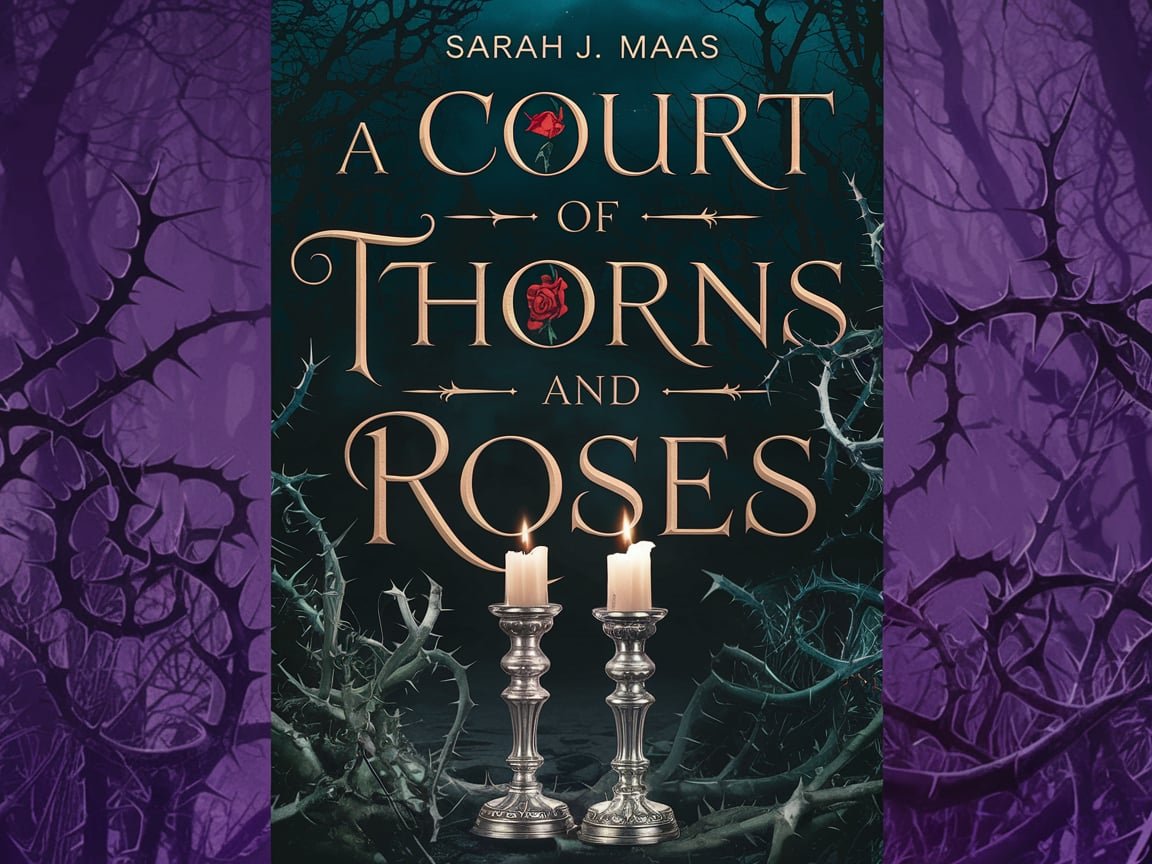Introduction to ‘The Wheel of Time’ Series
“The Wheel of Time” series, penned by the esteemed author Robert Jordan, stands as a monumental pillar in the pantheon of fantasy literature. Encompassing a grand total of 14 novels, this epic saga weaves a complex narrative rich in intricate world-building and compelling character arcs. Jordan, whose real name was James Oliver Rigney Jr., crafted a universe that seamlessly blends myth, magic, and meticulously detailed lore, captivating millions of readers worldwide.
Occupying a revered space within the fantasy genre, “The Wheel of Time” has significantly shaped contemporary literature. Its sweeping narrative has echoed through the works of numerous modern authors, much like J.R.R. Tolkien’s “The Lord of the Rings” before it. The series deftly explores themes of destiny, time, and the eternal struggle between good and evil while offering a tapestry of multifaceted characters, each contributing uniquely to the overarching epic.
“The Wheel of Time” gained further acclaim and heightened interest upon the involvement of Brandon Sanderson, who brought the series to its conclusion following Robert Jordan’s passing in 2007. Sanderson, selected based on his own merits within the fantasy sphere and profound respect for Jordan’s world, completed the final three books, adhering to Jordan’s extensive notes and outlines. This posthumous collaboration ensured that the saga met its intended conclusion, preserving the integrity and depth of the original vision.
By spanning 14 volumes, “The Wheel of Time” invites readers into an expansive, richly crafted cosmos where they can witness the evolution of its characters and the unfolding of its epic narrative. Through its complex storytelling and profound thematic investigations, the series has not only cemented its status as a cornerstone of fantasy literature but continues to inspire and influence new generations of writers and readers alike.

Creation of the World and Lore
The universe crafted in ‘The Wheel of Time’ by Robert Jordan is a testament to meticulous world-building. Demonstrating an ingenious blend of originality and inspiration from myriad sources, the series transports readers into a realm where nations, cultures, and the fabric of reality itself are rendered with remarkable depth. At the heart of this intricate world lies the One Power, a complex and captivating magic system that underpins the very essence of life and existence within the narrative.
Robert Jordan’s world-building begins with the creation of diverse nations, each characterized by unique societal structures, customs, and histories. From the militaristic Shienarans of the Borderlands to the sea-faring Atha’an Miere, also known as the Sea Folk, and the enigmatic Aiel of the desert, the varied cultures breathe life into the vast expanse of ‘The Wheel of Time’. Jordan’s attention to detail ensures that every aspect, from languages and clothing to political systems and traditions, feels authentic and immersive.
The One Power, divided into saidin and saidar, forms the cornerstone of the magic system in ‘The Wheel of Time’. This duality epitomizes the balance between male and female halves, an equilibrium crucial to the narrative’s progression and conflict. Channelers, individuals capable of wielding the One Power, play pivotal roles, influencing destinies and the fates of entire civilizations. The intricate rules governing the use of the One Power add layers of complexity, making it an integral part of the series’ allure.
In constructing this elaborate world, Jordan drew inspiration from an array of mythologies and historical epochs. The cyclical nature of time in the series echoes concepts found in Eastern philosophies, while the societal structures and warfare tactics reflect medieval European influences. The dark and light dichotomy resonates with Zoroastrian dualism, weaving a rich tapestry of mythological references that enhance the narrative’s depth.
Overall, the world of ‘The Wheel of Time’ is a meticulously crafted masterpiece that showcases Robert Jordan’s prowess in merging imagination with historical and cultural nuances. Each element, from nations and cultures to the One Power, contributes to a narrative that is as expansive as it is intricate, solidifying its place as a benchmark in epic fantasy literature.
Main Plot and Story Arcs
“The Wheel of Time,” an iconic work by Robert Jordan, is an intricate tapestry of stories centered around the lives of a diverse cast of characters bound by fate. The central plot revolves around Rand al’Thor, Mat Cauthon, and Perrin Aybara, three young men from a small village in the Two Rivers. Their lives take an unexpected turn when they discover that they are pivotal figures in the struggle against the Shadow, an evil force seeking to enslave the world.
Rand al’Thor, the protagonist, learns that he is the reincarnation of the Dragon Reborn, a legendary hero prophesied to lead the fight against the Dark One. As he grapples with his destiny, Rand must master the One Power, a source of immense magical energy, and unite the fractured lands to stand against the impending chaos.
Parallel to Rand’s journey, Mat Cauthon evolves from a mischievous villager into a master strategist with the memories of past generals. His arc is defined by a blend of luck and tactical genius, culminating in crucial victories against the forces of darkness. Meanwhile, Perrin Aybara undergoes a transformation from a blacksmith to a leader with a unique bond to wolves, symbolizing his struggle between his human instincts and animalistic tendencies.
The overarching themes of “The Wheel of Time” encompass the cyclical nature of time, destiny, and the ceaseless battle between good and evil. Time is depicted both metaphorically and literally as a wheel that turns through ages, weaving the lives of characters into an intricate pattern. Destiny plays a crucial role, with prophecies and legends shaping the characters’ paths. The conflict between Light and Shadow is relentless, with each side gathering allies and fortifying their positions for the ultimate confrontation.
Robert Jordan’s “The Wheel of Time” is a rich narrative that meticulously explores these themes through interwoven story arcs and deeply developed characters, creating a world that is both vast and intimate. The series stands as a testament to Jordan’s masterful storytelling and his ability to craft an epic saga that continues to captivate readers’ imaginations.

Character Development and Key Figures
One of the most compelling aspects of Robert Jordan’s “Wheel of Time” series is the intricate character development woven throughout the narrative. Central to the story are characters such as Rand al’Thor, Egwene al’Vere, and Nynaeve al’Meara, whose personal growth and transformation significantly impact the overarching plot.
Rand al’Thor, the protagonist, begins his journey as a humble shepherd in the village of Emond’s Field. As the series progresses, he discovers his destiny as the Dragon Reborn, a figure of prophecy fated to confront the Dark One in a battle to decide the world’s fate. Rand’s progression from a naive young man to a battle-hardened leader is a testament to Robert Jordan’s skill in depicting nuanced character arcs. His internal struggles, moral dilemmas, and evolving leadership challenges form the backbone of the epic saga.
Egwene al’Vere’s transformation is equally significant. Starting as a spirited village girl, she grows into a powerful and wise leader, eventually becoming the Amyrlin Seat of the Aes Sedai, the organization of women who can channel the One Power. Egwene’s journey is marked by resilience and learning, as she navigates the complexities of power, leadership, and sacrifice. Her character’s evolution showcases Jordan’s ability to portray strong, multi-dimensional female figures.
Nynaeve al’Meara stands out for her fierce loyalty and determination. Initially the Wisdom (healer) of Emond’s Field, Nynaeve’s journey is characterized by her struggle to master her considerable abilities with the One Power. Her intense emotional depth and relentless pursuit of justice and healing are central to her character arc. Nynaeve’s interactions with other key figures and her moments of vulnerability make her one of the most relatable and endearing characters in the series.
These primary characters illustrate how personal growth, internal conflict, and transformative experiences are vital components of the “Wheel of Time” series. Robert Jordan expertly develops each character, making their individual stories integral to the epic narrative’s grandeur and depth. Through their experiences, readers witness a rich tapestry of human emotion, strength, and evolution, which defines Jordan’s revered literary masterpiece.
Themes and Philosophical Depth
‘The Wheel of Time’ by Robert Jordan is more than just a high fantasy series; it is a complex tapestry of philosophical musings and thematic depth. One of the central themes is the cyclical nature of time itself. Jordan employs this concept through the titular wheel, which continuously weaves the Pattern of Ages. This representation imparts a sense of inevitability and continuity, where history seems to repeat itself with slight variations. This cycle is not just metaphorical but influences characters and plot points, embedding a profound reflection on destiny and reincarnation.
Another significant theme is identity. The characters in ‘The Wheel of Time’ continually grapple with who they are and who they are meant to be. This inner conflict often contrasts personal desires with the responsibilities thrust upon them by fate. Protagonists like Rand al’Thor and Egwene al’Vere undergo substantial transformations as they reconcile with their destinies. Such explorations of identity add layers to character development, making their journeys resonate deeply with readers.
Power and leadership also serve as cornerstone themes. Throughout the series, Jordan delves into the complexities of power—its corrupting influence, its potential for good, and its burdens. Characters like Moiraine Damodred and Mat Cauthon exemplify varied dimensions of leadership and responsibility. Jordan scrutinizes the moral ambivalence of power, illustrating that those who wield it must ever be wary of its seductive nature.
Moreover, ‘The Wheel of Time’ eloquently tackles the theme of balance. Be it through the duality of male and female power in the One Power or the equilibrium between Light and Shadow, the narrative consistently underscores the necessity for harmony. The intricate weaving of these themes into the story not only enhances its philosophical richness but also grounds the fantastical elements in universal truths. Robert Jordan has thus crafted a literary masterpiece in ‘The Wheel of Time’, imbuing it with timeless themes that reflect the human condition.
Impact on Fantasy Genre
The profound impact of Robert Jordan’s “The Wheel of Time” series on the fantasy genre cannot be overstated. Since its first publication, the series has been compared to seminal works such as J.R.R. Tolkien’s “The Lord of the Rings” and George R.R. Martin’s “A Song of Ice and Fire,” both of which have shaped modern epic fantasy. “The Wheel of Time” redefined the genre with its richly constructed world, complex characters, and intricate plotlines, setting a new standard for narrative depth and scope.
Unlike Tolkien’s relatively rigid delineation of good versus evil, Jordan introduced a spectrum of morally ambiguous characters and situations, thereby adding layers of complexity to the genre. The Wheel of Time series demands its readers to navigate through numerous intertwining story arcs, each punctuated with unpredictable twists and a tapestry of cultures and histories.
George R.R. Martin’s “A Song of Ice and Fire” series owes part of its intricate politicking and multilayered character development to the foundation laid by Jordan. Jordan’s influence extends to contemporary authors, who have built upon his methods of detailed world-building and sophisticated plot structuring. Modern epic fantasy narratives now often feature detailed appendices, glossaries, and supplementary materials, a trend popularized by “The Wheel of Time.”
Moreover, Jordan was a pioneer in integrating diverse cultures and philosophies into his world, creating a rich mosaic that resonates with a global audience. This international appeal has contributed significantly to the series’ longevity and success, inspiring a new generation of writers to embrace inclusivity in their storytelling.
In essence, “The Wheel of Time” series has expanded the boundaries of what epic fantasy can achieve, both in terms of narrative ambition and thematic sophistication. Its legacy is evident as its influence pervades the works of numerous modern authors who continue to draw inspiration from Robert Jordan’s grand vision.
Fan Culture and Community
The dynamic and enduring fan culture surrounding “The Wheel of Time” by Robert Jordan is a testament to the series’ lasting impact on fantasy literature. Since its debut, the series has fostered a thriving community of enthusiasts who celebrate and discuss its intricate world. These dedicated fans convene on various platforms, including online forums, where they dissect plot points, share theories, and engage in heated debates about the series’ extensive lore. Websites such as Dragonmount and Theoryland have become indispensable hubs for fans seeking connections and deeper understanding of the vast narrative.
Conventions dedicated to fantasy literature also witness substantial representation from The Wheel of Time fandom. Events like JordanCon, named in honor of the author, draw fans from around the globe. At these conventions, attendees partake in a variety of activities—from panel discussions to cosplay, vividly bringing to life their favorite characters from the Wheel of Time Jordan series. Such gatherings not only provide a space for fans to meet and form lasting friendships but also play a significant role in keeping the enthusiasm for the series alive and thriving.
Moreover, the creative talents within the fan community have given rise to an abundance of fan art, tributes, and unique reinterpretations of scenes from the books. Artists, writers, and creators often share their work online, enhancing the collective appreciation of Jordan’s world-building. This cultural and artistic output serves as a testament to the series’ influence on its readers and its ability to inspire creativity.
The longevity of The Wheel of Time’s devoted fanbase has been instrumental in its standing as a pillar of modern fantasy literature. By continually engaging with the series and contributing to its vibrant culture, fans have ensured that Robert Jordan’s magnum opus remains a relevant and celebrated part of the literary landscape.
Adaptations and Legacy
‘The Wheel of Time’ by Robert Jordan has enjoyed a significant resurgence of interest with the recent adaptation by Amazon Prime. This monumental series, considered a pivotal work in the high fantasy genre, has captured the imagination of both seasoned fans and new audiences. The adaptation aims to strike a balance between staying true to the original material and making necessary updates to resonate with contemporary viewers. Modern visual effects, inclusive casting, and narrative refinements ensure that the essence of Jordan’s vision is retained while enhancing accessibility and appeal.
The Amazon Prime series has been met with mixed criticism and applause, navigating the tightrope between die-hard enthusiasts of the books and a broader, less familiar audience. The visual representation of the world, characters, and overarching themes has been praised for its attention to detail and fidelity to Jordan’s descriptions. However, some purists find it challenging to accept deviations from the original plotlines. This discourse underscores the difficulty in adapting such an expansive and beloved series.
Beyond the recent TV adaptation, ‘The Wheel of Time’ has inspired numerous other forms of media, including video games, graphic novels, and audiobooks, further cementing its influence in the fantasy genre. Each adaptation and reinterpretation contributes to the expanding wheel of Jordan’s universe, introducing new dimensions to his world and its lore.
‘The Wheel of Time’ stands as a cornerstone in literary history, comparable to works like ‘The Lord of the Rings’. Robert Jordan’s intricate storytelling and richly developed world have left an indelible mark on the genre, influencing a generation of writers and creators. His legacy is not merely a collection of novels but an expansive mythos that continues to inspire both appreciation and reverence in the literary community.
While adaptations bring Jordan’s work to new heights and broader audiences, the endurance of ‘The Wheel of Time’ attests to its timeless quality. The series invites readers and viewers alike into a world where the cyclical nature of time and the human spirit are explored with unparalleled depth and complexity. Jordan’s masterpiece remains a testament to the enduring power of epic storytelling.





